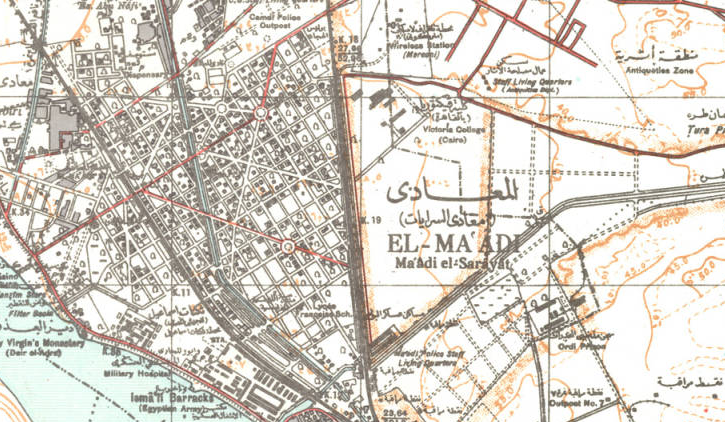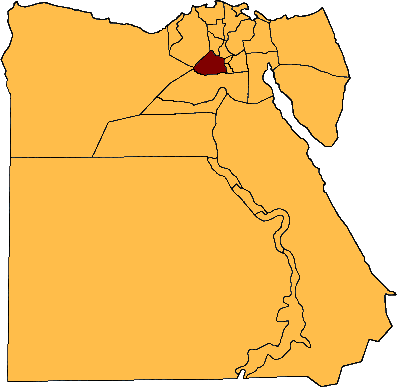|
Helwan Governorate
Helwan Governorate was one of the governorates of Egypt. It was located in Lower Egypt. History The Helwan Governorate was split from the Cairo Governorate in April 2008. It was created through a presidential decree in order to ease the burden placed on Cairo, one of Egypt's most densely populated governorates. The city of Helwan became the capital of the Helwan Governorate, which encompassed most of the eastern suburbs of Cairo, notably the affluent neighbourhood of Maadi. In April 2011, Prime Minister Essam Sharaf abolished the Helwan Governorate and reincorporated its territory into the Cairo Governorate. Cities * Helwan References See also * Cairo Governorate * 6th of October Governorate The 6th of October Governorate was one of the governorates of Egypt. It was located in Middle Egypt, to the west of the Nile valley. It was dissolved on 14 April 2011 and was reincorporated into the Giza Governorate. History The 6th of Octob ... (now defunct) Forme ... [...More Info...] [...Related Items...] OR: [Wikipedia] [Google] [Baidu] |
Governorates Of Egypt
Egypt has a Centralisation, centralised system of local government officially called local administration as it is a branch of the Executive (government), Executive. The country is divided into twenty-seven governorates ( '; ; genitive case#Arabic, genitive case: ; plural: '), the top tier of local administration. A governorate is administered by a governor, who is appointed by the President of Egypt and serves at the president's discretion. Governors have the civilian rank of minister and report directly to the Prime Minister of Egypt, prime minister, who chairs the Board of Governors ''(majlis al-muhafzin)'' and meets with them on a regular basis. The Ministry of Local Development, Minister of Local Development coordinates the governors and their governorate's budgets. Overview Egypt generally has four tiers of local administration units: governorates, cities, counties ''(marakiz)'', districts (subdivisions of cities) and villages (subdivisions of counties). There is a tie ... [...More Info...] [...Related Items...] OR: [Wikipedia] [Google] [Baidu] |
Egypt
Egypt ( ar, مصر , ), officially the Arab Republic of Egypt, is a transcontinental country spanning the northeast corner of Africa and southwest corner of Asia via a land bridge formed by the Sinai Peninsula. It is bordered by the Mediterranean Sea to the north, the Gaza Strip of Palestine and Israel to the northeast, the Red Sea to the east, Sudan to the south, and Libya to the west. The Gulf of Aqaba in the northeast separates Egypt from Jordan and Saudi Arabia. Cairo is the capital and largest city of Egypt, while Alexandria, the second-largest city, is an important industrial and tourist hub at the Mediterranean coast. At approximately 100 million inhabitants, Egypt is the 14th-most populated country in the world. Egypt has one of the longest histories of any country, tracing its heritage along the Nile Delta back to the 6th–4th millennia BCE. Considered a cradle of civilisation, Ancient Egypt saw some of the earliest developments of writing, agriculture, ur ... [...More Info...] [...Related Items...] OR: [Wikipedia] [Google] [Baidu] |
Lower Egypt
Lower Egypt ( ar, مصر السفلى '; ) is the northernmost region of Egypt, which consists of the fertile Nile Delta between Upper Egypt and the Mediterranean Sea, from El Aiyat, south of modern-day Cairo, and Dahshur. Historically, the Nile River split into seven branches of the delta in Lower Egypt. Lower Egypt was divided into nomes and began to advance as a civilization after 3600 BC. Today, it contains two major channels that flow through the delta of the Nile River – Mahmoudiyah Canal (ancient Agathos Daimon) and Muways Canal (, "waterway of Moses"). Name In Ancient Egyptian, Lower Egypt was as ''mḥw'' and means ''"north"''. Later on, during Antiquity and the Middle Ages, Greeks and Romans called it ''Κάτω Αἴγυπτος'' or ''Aegyptus Inferior'' both meaning "Lower Egypt", but Copts carried on using the old name related to the north – ''Tsakhet'' () or ''Psanemhit'' () meaning the "Northern part". It was further divided into number of regio ... [...More Info...] [...Related Items...] OR: [Wikipedia] [Google] [Baidu] |
Cairo Governorate
Cairo Governorate is one of the 27 governorates of Egypt. It is formed of the city of Cairo, both the national capital of Egypt and the governorate's, in addition to five satellite cities: the New Administrative Capital - set to become the seat of national government, New Cairo, Shourok, Badr, Capital Gardens, and 15th of May. These cities form almost half of the Greater Cairo metropolitan area by population. Cairo Governorate is one of the 27 governorates of Egypt. It is formed of the city of Cairo, both the national capital of Egypt and the governorate's, in addition to five satellite cities: the New Administrative Capital - set to become the seat of national government, New Cairo, Shourok, Badr, Capital Gardens, and 15th of May. These cities form almost half of the Greater Cairo metropolitan area by population. As one of three city-states in Egypt, where the Cairo governor is also the head of the city. This rightfully creates much confusion and synonymity between t ... [...More Info...] [...Related Items...] OR: [Wikipedia] [Google] [Baidu] |
Al-Ahram
''Al-Ahram'' ( ar, الأهرام; ''The Pyramids''), founded on 5 August 1875, is the most widely circulating Egyptian daily newspaper, and the second oldest after '' al-Waqa'i`al-Masriya'' (''The Egyptian Events'', founded 1828). It is majority owned by the Egyptian government, and is considered a newspaper of record for Egypt. Given the many varieties of Arabic language, ''Al-Ahram'' is widely considered an influential source of writing style in Arabic. In 1950, the Middle East Institute described ''Al-Ahram'' as being to the Arabic-reading public within its area of distribution, "What ''The Times'' is to Englishmen and ''The New York Times'' to Americans";Middle East Institute, 1950, p. 155. however, it has often been accused of heavy influence and censorship by the Egyptian government. In addition to the main edition published in Egypt, the paper publishes two other Arabic-language editions, one geared to the Arab world and the other aimed at an international audience, as ... [...More Info...] [...Related Items...] OR: [Wikipedia] [Google] [Baidu] |
Helwan
Helwan ( ar, حلوان ', , cop, ϩⲁⲗⲟⲩⲁⲛ, Halouan) is a city in Egypt and part of Greater Cairo, on the bank of the Nile, opposite the ruins of Memphis. Originally a southern suburb of Cairo, it served as the capital of the now defunct Helwan Governorate from April 2008 to April 2011, after which it was re-incorporated into the Cairo Governorate. The ''kism'' of Helwan had a population of 643,327 in the 2006 census.Central Agency for Public Mobilisation and Statistics, Population and Housing Census 2006, Population distribution by sex, gov: Cairo Retrieved on 2008-04-01. History The Helwan and Isnian cultures of the late |
Maadi
Maadi ( ar, المعادي / transliterated: ) is a leafy suburban district south of Cairo, Egypt, on the east bank of the Nile about upriver from downtown Cairo. The Nile at Maadi is parallelled by the Corniche, a waterfront promenade and the main road north into Cairo. There is no bridge across the Nile at Maadi; the nearest one is located at El Mounib along the Ring Road (Tarik El-Da'eri, en, The Round Road) on the way north to the downtown. Maadi's population was estimated to be 97,000 in 2016. The district is popular with international expatriates as well as Egyptians and is home to many embassies, as well as major international schools, sporting clubs, and cultural institutions such as the Supreme Constitutional Court of Egypt and the national Egyptian Geological Museum. Name Ma'ǎdi معادي is the plural form of the word ma'diyya, arz, معدية, which means "ferry"; hence, El-Ma'adi literally means "The ferries". There was a story that the name comes from a ... [...More Info...] [...Related Items...] OR: [Wikipedia] [Google] [Baidu] |
Essam Sharaf
Essam Abdel-Aziz Sharaf ( ar, عصام عبد العزيز شرف, ; born 1952) is an Egyptian academic who was the Prime Minister of Egypt from 3 March 2011 to 7 December 2011. He served as Minister of Transportation from 2004 to 2005. Early life and education Sharaf was born in Giza in 1952. After receiving his BSc in civil engineering from Cairo University in 1975, he went to Purdue University where he continued his studies, receiving his MSc Eng in 1980 and his PhD in 1984. Career Sharaf took a post as a visiting assistant professor at Purdue in 1984 before becoming assistant professor of highway and traffic engineering at Cairo University the following year. In 1990, he was an assistant professor of civil engineering at King Saud University in Saudi Arabia. He returned to Cairo University in 1991, becoming a professor of highway engineering in 1996 while working as senior advisor for the transportation and aviation department in Zuhair Fayez Partnership (ZFP) in Jeddah, Sa ... [...More Info...] [...Related Items...] OR: [Wikipedia] [Google] [Baidu] |
6th Of October Governorate
The 6th of October Governorate was one of the governorates of Egypt. It was located in Middle Egypt, to the west of the Nile valley. It was dissolved on 14 April 2011 and was reincorporated into the Giza Governorate. History The 6th of October Governorate was split from the Giza Governorate on 17 April 2008. It was created through a presidential decree in order to ease the burden placed on Giza, one of Egypt's most densely populated governorates. The 6th of October City became the capital of the 6th of October Governorate, which was mostly made up of recently established planned communities such as the Sheikh Zayed City. On 14 April 2011, prime minister Essam Sharaf dissolved the 6th of October Governorate and reincorporated its territory into the Giza Governorate. The governorate's name commemorates the Egyptian military's successful crossing of the Suez Canal on 6 October 1973 during the October War. 6 October is also Egypt's Armed Forces Day. Geography The area of the 6th ... [...More Info...] [...Related Items...] OR: [Wikipedia] [Google] [Baidu] |
Helwan Governorate
Helwan Governorate was one of the governorates of Egypt. It was located in Lower Egypt. History The Helwan Governorate was split from the Cairo Governorate in April 2008. It was created through a presidential decree in order to ease the burden placed on Cairo, one of Egypt's most densely populated governorates. The city of Helwan became the capital of the Helwan Governorate, which encompassed most of the eastern suburbs of Cairo, notably the affluent neighbourhood of Maadi. In April 2011, Prime Minister Essam Sharaf abolished the Helwan Governorate and reincorporated its territory into the Cairo Governorate. Cities * Helwan References See also * Cairo Governorate * 6th of October Governorate The 6th of October Governorate was one of the governorates of Egypt. It was located in Middle Egypt, to the west of the Nile valley. It was dissolved on 14 April 2011 and was reincorporated into the Giza Governorate. History The 6th of Octob ... (now defunct) Forme ... [...More Info...] [...Related Items...] OR: [Wikipedia] [Google] [Baidu] |
Former Governorates Of Egypt
A former is an object, such as a template, gauge or cutting die, which is used to form something such as a boat's hull. Typically, a former gives shape to a structure that may have complex curvature. A former may become an integral part of the finished structure, as in an aircraft fuselage, or it may be removable, being using in the construction process and then discarded or re-used. Aircraft formers Formers are used in the construction of aircraft fuselage, of which a typical fuselage has a series from the nose to the empennage, typically perpendicular to the longitudinal axis of the aircraft. The primary purpose of formers is to establish the shape of the fuselage and reduce the column length of stringers to prevent instability. Formers are typically attached to longerons, which support the skin of the aircraft. The "former-and-longeron" technique (also called stations and stringers) was adopted from boat construction, and was typical of light aircraft built until the ad ... [...More Info...] [...Related Items...] OR: [Wikipedia] [Google] [Baidu] |







